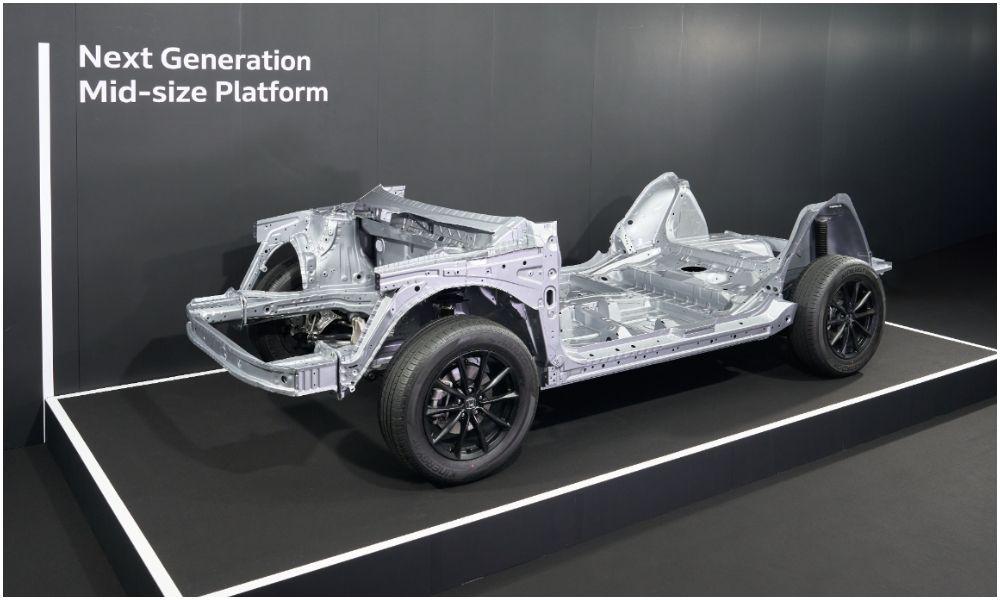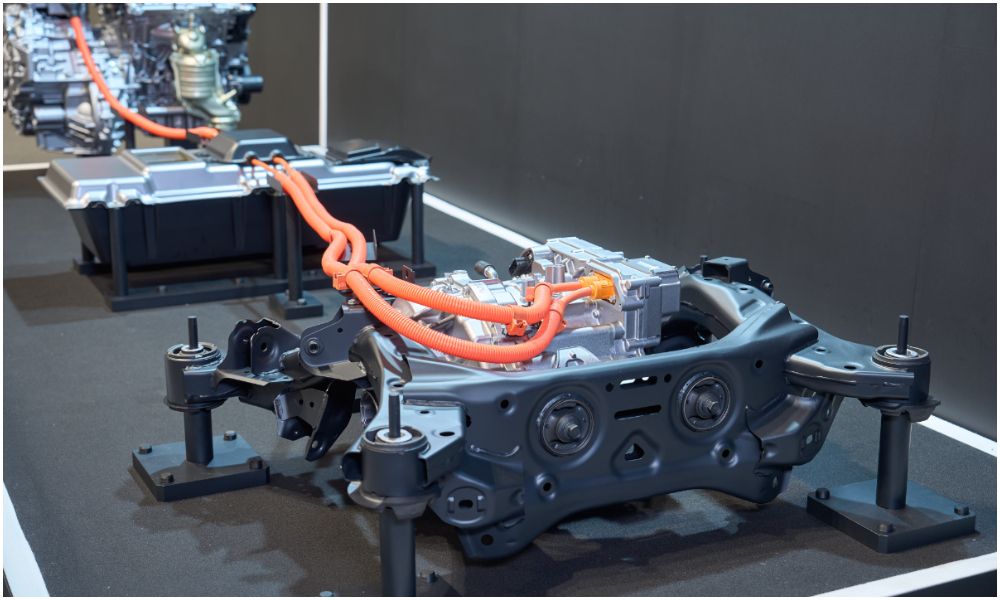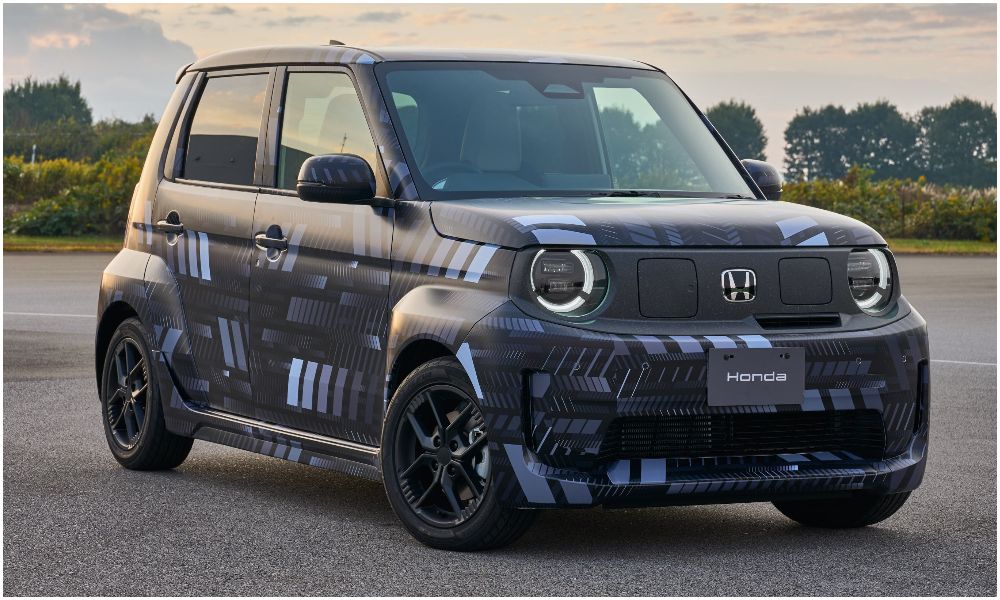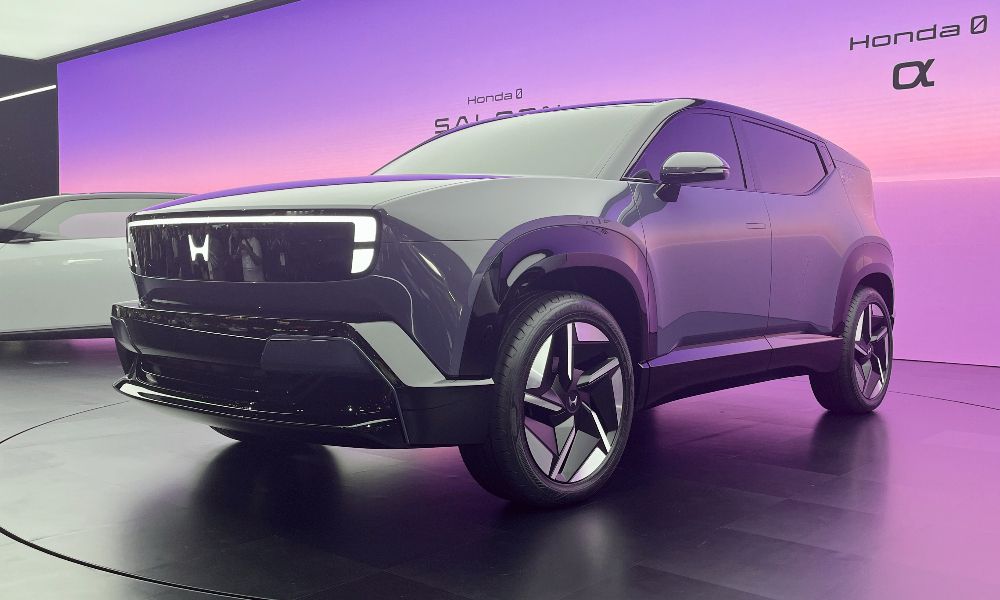Honda recently conducted a workshop on automotive technology for a select media group at its R&D center in Tochigi, near Tokyo. It gave a detailed glimpse of the next generation technologies to be used in its vehicles to be launched at the turn of this decade. Broadly, these include a platform for future small and medium-sized petrol/electric hybrid cars (including the next-generation City and Elevate), a new robust hybrid system for larger models (CR-V and above) and technologies for compact electric cars showcased by the Super One concept at the recently concluded 2025 Japan Mobility Show (JMS).
While the new ‘big’ hybrid platform improves efficiency, performance and packaging flexibility, the next-generation hybrid system aims to deliver better performance and better towing capacity than standard gasoline cars while improving fuel economy.

The Super-One prototype has been built to demonstrate that the E.V. How can it be special and entertaining
Interestingly, the Super-One prototype, which signaled Honda’s intention to offer a practical urban mobility option, also exuded the agility of a ‘hot hatch’.
Next Generation Honda Midsize Platform
Work is going on on this new platform so that the strength of the body can be increased while reducing weight. Honda says a high-level modular architecture will allow greater component commonality and control manufacturing costs. This will enhance the “pleasure of driving” – something the carmaker has historically been known for.
Honda claims that it has set a standard for driving stability with this change in drivability. This will dramatically improve vehicle performance. Additionally, Honda engineers have developed a technology that allows the body to flex slightly within limits. This will allow the car to control the load on each tire for better grip, for example when cornering. Thus, this new platform is 90 kg lighter than Honda’s existing architecture. This will mean better mileage and a more responsive experience.

Lightweight mid-sized platform promises enhanced performance and mileage
This design separates modules like the engine room (which may be the same in all cars) from the rear cabin. In fact, the aim is to ensure more than 60% component commonality across all models using this platform, which will reduce both development and ultimately model costs.
Some of the advanced systems included include the Motion Management System, which utilizes technology from Honda’s robotics developments and adapts the vehicle control systems to the driver’s wishes. Agile Handling Assist (AHA) which is based on electronic control systems currently used in models like the Accord and Prelude, and a new Pitch Control technology that helps in taking sharp turns regardless of road conditions.
Next Generation Honda Large Hybrid System
This is mostly for the US market. This system will provide more towing capacity along with more powerful driving performance, which is generally required there. All this can be done while keeping emissions under control, which is a major problem for many large, popular American SUVs and pickup vehicles these days.

New hybrid system for big Honda cars, which will perform strongly
For this, Honda has developed a new V6 engine that will deliver better mileage while meeting future environmental regulations, thereby reducing fuel consumption. For this, it will also introduce a new electric drive unit and a battery pack designed for better range than the existing models. Also, cost-effectiveness. Honda says the aim is to improve acceleration by 10% and mileage by 30%.
honda compact ev
The Japanese carmaker’s first production EV was the Honda e, which was based on the urban EV concept. Last year, it introduced a compact production EV which was meant for commercial purposes. N-Van E: By name, it was built on the Kei car platform (less than 3.5 meters long) of the same name. But the Super One concept unveiled at JMS this year takes it a step further and shows Honda’s intention to create a very different urban EV that doesn’t feel like a simple endeavour.
The models, built under the “e:Dash Booster” concept, are designed to transform the daily commute into an exciting and uplifting experience by offering a pleasant drive with simulated noises. Honda expects it to hit showrooms in Japan in early 2026. It will then be launched in the UK and other Asian countries where demand for agile, small EVs is high. At present, India is not on its agenda.

Super-one hatchback is not on India’s agenda at the moment
The lightweight body and petrol-diesel inspired drive were the highlights of the pre-production model we drove. Although battery technology will be at the center of the electric vehicle, Honda engineers have not compromised on drive dynamics. The key structural elements they have focused on include an optimized body that builds on the lightweight base of its previous N series platform. Honda claims that this will be the lightest body in the A segment. It uses a dedicated chassis with wide tread and fenders for stability. Additionally, it has a lower center of gravity than a similarly proportioned petrol-diesel car because the heaviest part – a slim battery pack – is located low and center in the underbody.
The Super-One has a “Boost Mode”. It boosts power instantly on demand, bringing out the full performance potential of the power unit. For effect, a simulated 7-speed transmission effect is created along with a powerful engine ‘sound’. The gearshift feel mimics that of a traditional automatic. It calculates simulated engine speed (approximate RPM) and gear position in real time based on accelerator position and driving conditions. The simulation goes 4D by reproducing the physical feedback of a conventional vehicle, including a “kickdown” jolt not only during acceleration but also when decelerating – similar to engine-braking.
future plan
We would like to believe so. Honda is trying to improve all aspects of its hybrid systems and electric vehicle (EV) platforms, and plans to adopt them in a group of next-generation models to be launched worldwide from 2027. As reported earlier on carandbike.com, India is now one of Honda’s three key markets along with Japan and the US. There are plans to launch a total of 10 new models in the next few years, out of which 7 will be SUVs. These will be a mix of global imports as well as made-in-India models.

0 Alpha production variant to be launched in India in 2027
We believe that some of the technologies introduced at the Tech Day, such as the H-RV small hybrid system and models like the Prelude sportscar, may soon be seen on Indian roads in the future. Prelude SportsCar is more of a halo model approach than a numbers-based game. Additionally, the Tech Day showcase will definitely provide a ray of hope to die-hard Honda fans who might be lamenting the ‘domestication’ of this Japanese brand that was born out of love for performance. Although this activity will only start in 2027, Honda is a brand to keep an eye on. As they say, better late than never.






